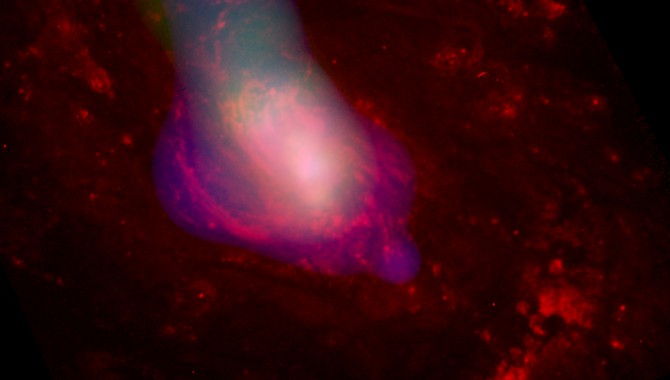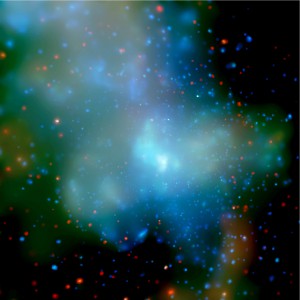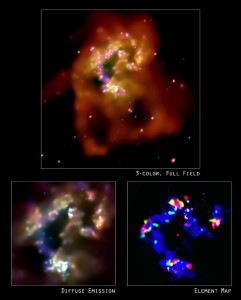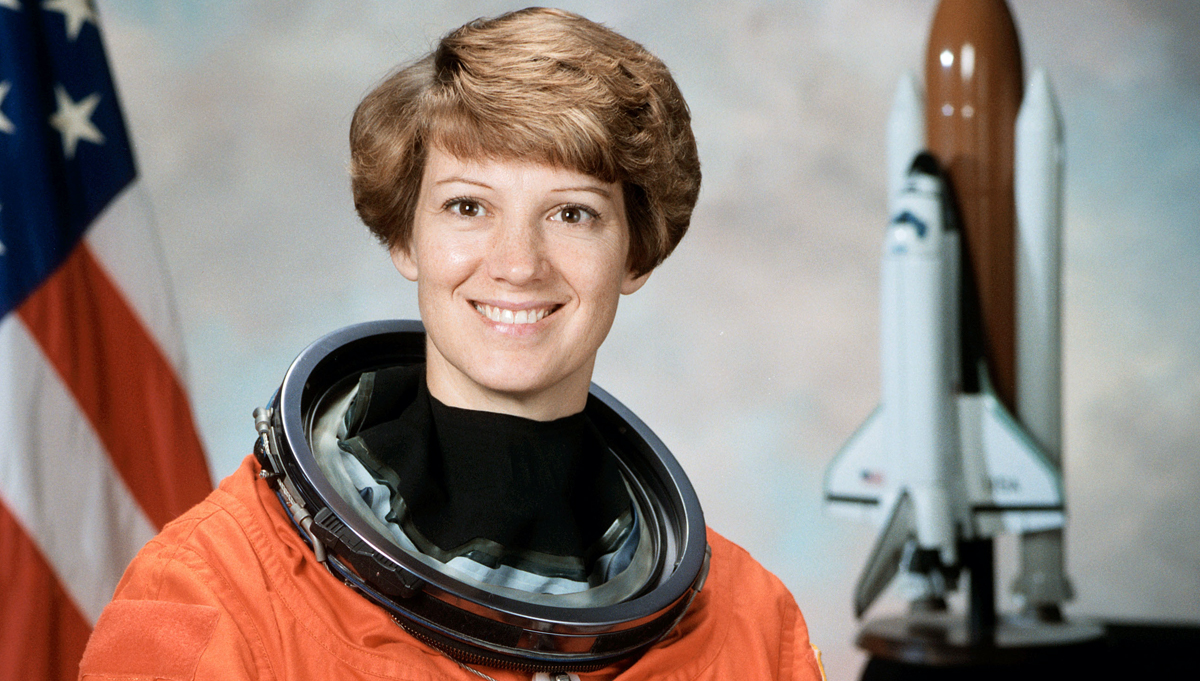
By Keith Hefner and Greg Davidson
The Chandra X-ray Observatory inherited a legacy of good lessons from the Hubble Space Telescope, and nearly the entire team as well. Since we’ve all worked together for years on Hubble, Chandra began with a great team environment and incredible communication, so we were prepared to handle upcoming challenges.
NASA Headquarters decided to restructure Chandra in January 1992 despite the highly successful mirror technology demonstration in September 1991 that won us Congressional approval to begin the observatory’s full design and development. NASA senior management had determined that Congress would not fund the originally planned Chandra program, and they challenged the entire team to develop dramatically less expensive options to conduct the mission. While such exercises are unfortunately all too common, identifying significant savings (and later realizing those savings) is much rarer. We accomplished it in less than four months.
Restructuring the program was not easy. Headquarters was pushing for deep budget cuts, the science community was vociferously resisting, and Marshall Space Flight Center was working hard to recover a viable and sustainable program. A broad team came together to achieve what seemed impossible: Marshall’s Observatory Projects Office, in-house Marshall staff at the X-Ray Calibration Facility, Marshall’s Project Science Office, a science team from the Smithsonian Astrophysical Observatory (including Chandra Science Center, which operates the observatory), and four principal investigator teams. Northrop Grumman Space Technology led the industry team and worked with Marshall to build teamwork — not by holding team-building off-sites, but by fairly and rigorously analyzing the technology and our new goals. By considering a wide range of alternatives and making decisions based on data and analysis, what could have been a contentious decision evolved to consensus and served to bring the entire team together.

This image was produced by combining a dozen NASA Chandra X-ray Observatory observations made of a 130 light-year region in the center of the Milky Way.
Photo Credit: NASA/CXC/UCLA/M. Muno et al.
We evaluated cost, schedule, performance, and risks for each new option. Balancing science utility and cost led us to select a highly elliptical orbit with uncrewed robotic delivery, deployment, and maintenance. The proposed 100,000 km apogee orbit would provide much greater science observing time, since Earth would block the telescope’s line of sight for a much smaller fraction of each orbit, but two alternate technologies were necessary to reach this flight path. We used composite materials extensively to reduce observatory mass from more than 32,000 lbs to 10,110 lbs. We had to eliminate other features entirely: four of twelve mirrors were removed from the plans along with two focal plane instruments — one was primarily a low-risk backup; the other did not require mirrors of Chandra’s quality and was assigned to fly on another spacecraft. We also changed Chandra from being a low-Earth orbit telescope like Hubble to a higher-orbit observatory to allow us the same amount of observation time with lower operations and servicing costs, which meant eliminating shuttle servicing from our plans. Because we knew we wouldn’t be able to reach the observatory again, its design had to be extremely robust.
The team achieved some significant performance improvements through the restructuring as well, including better photon collection due to iridium mirror coating, higher-efficiency detectors, and better-than-expected mirror coating reflectivity. Mirror smoothness provided focus three times sharper than our requirements. Chandra achieved significantly more observing time than we anticipated because restructuring lowered our anticipated time in slewing, safe modes, scheduling inefficiency, etc. and enabled the observatory to spend less time in radiation belts by raising its orbit from 100,000 km to 140,000 km. Chandra provided substantially more performance than promised for the budget.

An artist’s illustration of the Chandra spacecraft in orbit.
Photo Credit: Marshall Space Flight Center
The restructuring saved American taxpayers $3.6 billion, but it also left the program with a very lean budget. NASA was entering an era of “faster, better, cheaper,” and while Chandra was still a large program, it was given very limited flexibility. Our team was able to execute the lean program because of a program management approach that allowed us to focus on mitigating key risks and a culture that emphasized high- value investments or savings, which influenced individual, organizational, and team behavior to focus efforts on what was best for the program.
Proactive Risk Management
Chandra demonstrated the value of reducing technology risk. The team proactively conceived and created a prototype pathfinder for the spacecraft that ended up preventing a two- to three-month delay. We had allocated reserve funds to produce a model of a key portion of the Structural Test Article (STA) — a model of the spacecraft structure. Creating the pathfinder uncovered a problem with the resin, which only partially cured at room temperature during the forty-six-day lay-up. If we had not created the pathfinder, this problem would have emerged while developing the equipment compartment for the STA and caused the delay. These lost months would have led to a late start in the mechanical integration of our flight spacecraft, and ultimately may have threatened the overall program schedule.
Lessons learned from the central cylinder pathfinder were folded into the STA’s development. We shared knowledge not only with regard to materials and designs, but also with respect to assembly and testing processes. Later, the team used the STA’s static loads test to develop ways to reduce the flight structure’s static test by four months. We also simplified the approach for applying loads to minimize time-consuming configuration changes. These measures reduced required testing from more than thirty weeks to seven weeks.

The hurly-burly interactions in the compact group of galaxies known as Stephan’s Quintet are shown in this composition of a Chandra X-ray Observatory image, in blue, superimposed on a Digitized Sky Survey optical image, in yellow.
Photo Credit: NASA/CXC/INAF-Brera/G. Trinchieri et al. (X-ray); Pal.Obs. DSS (optical)
Our team also encouraged efforts to push back against some risk-reduction expenditures. Examples include working closely with Johnson Space Center to get a test exemption for the elements that bore Chandra’s 500-lb. mirrors. We also developed a gravity off-load approach for the High Resolution Mirror Assembly (HRMA), which allowed it to be checked during a series of other tests already occurring at the X-Ray Calibration Facility instead of being shipped later to ITT in Rochester, NY, for separate tests that would have extended its build time.
High-Performance Culture
Cynics assume project team members will play “project manager’s poker” and exploit problems elsewhere in the program. Some take it as given that industry can be counted on to take advantage of government changes, and there will be waste and inefficiency because project organizations can’t work as a team and would rather “throw problems over the transom.” If these behaviors had occurred among the Chandra team, the program might have slipped many years and suffered high overruns.
At a monthly meeting with the telescope subcontractor ITT, an engineer announced his team had discovered a problem in meeting a Level 3 specification for the obscuration caused by the HRMA’s thermal baffling. ITT had developed an effective fix for $282,000 to meet the science requirements with no schedule impact, and the team was ready to move forward with the plan. A science center representative, who had the engineering insight to understand the validity of the violation and the proposed fix, was in the audience. He also had the science insight to understand the violation was trivial and was willing to stand up in a room of fifty people and say, “That is the stupidest thing I’ve ever heard.” He instead recommended taking no action and saving the money. The team listened to him, quickly verified the facts, and eliminated any further efforts on the issue. This is a significant contrast with other programs where no scientist would yield on a requirement affecting performance, no matter how trivial. It also demonstrates a culture that welcomed broad technical and scientific participation and encouraged dissenting opinions.
If culture is a key driver of outstanding program performance, then the critical question is how to cultivate a high-performance culture. On Chandra, the ingredients included an experienced science team that was fully integrated into the project — their culture of skeptical inquiry with a focus on mission utility was a core part of the overall program culture. Including our operations and ground contractors early in our design and development also served us well. They were all intimately involved in the requirements and design reviews and worked with us hand in hand to ensure flight and hardware systems were compatible. A lot of our operations success today is built upon these early steps we took during development. A prime contractor led the industry team and was responsible for aligning corporate incentives and behavior with program goals. The NASA Project Office selected team members and assigned roles based on the best value to the program and led by example in managing the team in a collaborative and constructive fashion. And, after the restructuring, NASA Headquarters and Congress were able to provide stable funding and top-level requirements, which enabled us to focus on project execution.

This montage of NASA Chandra X-ray Observatory images shows a pair of interacting galaxies known as the Antennae. Rich deposits of neon, magnesium, and silicon were discovered in the interstellar gas of this system.
Photo Credit: NASA/CXC/SAO/G. Fabbiano et al
Still Performing
As the nation looks toward bold new ventures in space, the Chandra X-ray Observatory offers an example of how billion- dollar missions can successfully develop with tightening fiscal constraints. Chandra experienced many of the challenges facing space programs — state-of-the-art technical requirements and budget-induced slips and restructurings — and still achieved the originally envisioned performance for dramatically lower cost. This was accomplished through teamwork, systems engineering, advanced technology, and effective approaches for program implementation as well as a high-performance culture that aligned goals and focused on mission success. As Chandra now surpasses its original five-year mission, the observatory continues to provide superb scientific performance.










